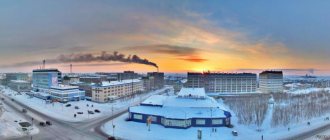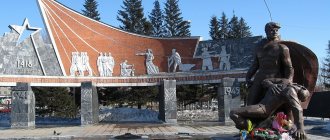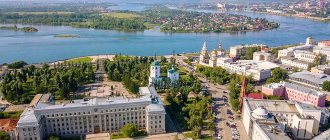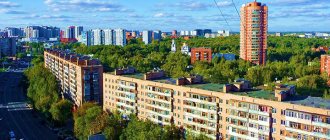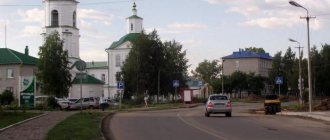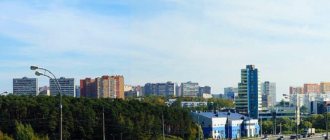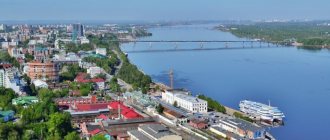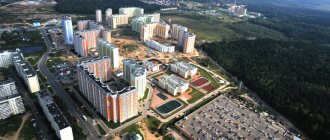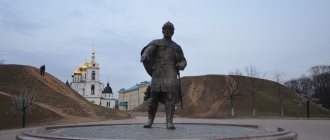On the 78th anniversary of Vorkuta receiving city status, NEVSKIE NEWS talks about its past - both terrible and beautiful, as well as its alarming present, because this region tops the Komi anti-rating for population outflow.
Ice-bound Vorkuta was formed as a city 78 years ago - November 26, 1946. It was a city of excellence, a city of advanced valor. Now Vorkuta is going through hard times - entire villages are becoming ghosts, businesses are closing, and people are leaving the city streets.
How Vorkuta began
Georgy Chernov is a young geologist who graduated from Moscow University in 1930 and received his first assignment - to explore the distant Vorkuta River for the presence of coal. In the summer, while ascending the river with a small expedition detachment, 70 kilometers from the mouth, Georgy discovered five seams of coal of working power and high quality. This is how Chernov became the discoverer of the Vorkuta coal deposit.
The first experimental industrial mine No. 1/2 was founded in 1932 on the right bank of the Vorkuta River in the place where the village of Rudnik later developed. This mine produced the first coal on the mountain on September 1, 1934 - this day is considered the birthday of the Pechora Coal Basin. All work was carried out manually and only in 1935 a gasoline generator was launched and the use of electricity for industrial purposes began.
The order to create the city of Bolshaya Vorkuta was signed on January 4, 1936, and already in 1937 the construction of a new mine, “Capital” No. 1, began. The work was carried out by prisoners: a small stage of 26 carpenters marked the beginning of the village, and then the city of Vorkuta.
By a decree of the Presidium of the Supreme Soviet of the RSFSR dated January 9, 1940, the village of this mine was transformed into the village of Vorkuta, Bolshezemelsky district (the center was the village of Josedo-Hard) of the Nenets National District of the Arkhangelsk Region. And in October of the same year it was transferred to the Kozhvinsky district of the Komi Autonomous Soviet Socialist Republic.
Vorkuta was recognized as a city at the height of the Great Patriotic War, on November 26, 1943.
Vorkuta Museum and Exhibition Center /
STORIES
Part 1. Vorkuta: from progress to depression
0 reviews
Over the past couple of years, various media outlets have regularly shown depression-ridden materials about Vorkuta, a coal-mining city in the north of the Komi Republic. Images of abandoned homes and businesses are reinforced by dry statistics. According to it, Vorkuta is the fastest dying city in Russia. Since the collapse of the USSR, over 150 thousand people have left from there (from here).
Modern population estimates vary. People continue to leave, often remaining registered in Vorkuta. On the other hand, even now this city attracts labor migrants from all over Russia and neighboring countries. According to unofficial estimates, about 50 thousand people now live in Vorkuta.
“Why is she even there, this “Polar Stoker”?”
In the photo: Vorkuta in the early 60s
In the 1930s, deposits of high-quality coking coal, a necessary component of metallurgy, were discovered in the uninhabited Bolshezemelskaya tundra. Over the course of several years, several villages and primitive, shallow mines grew up on the banks of the Vorkuta River. Mostly prisoners worked for them. The outbreak of World War II increased the country's need for steel, and therefore coal. The sluggish Kotlas-Vorkuta railway was hastily completed. And already from 1942, trains of coal went to the mainland. Vorkuta, nicknamed the “Polar Stoker,” became one of the few cities that grew rapidly during the war. Albeit due to the huge influx of prisoners and labor army members.
In 1943, Vorkuta received city status. After the war, the city continued to grow rapidly. The death of Stalin and the gradual liquidation of the camp system forced the creation of conditions in the far north to attract civilian workers. Quite ordinary civilian houses are being built on the sites of former camp barracks. Enterprise managements spare no expense on infrastructure facilities. Huge recreation centers, gyms, swimming pools, educational institutions and even city television are appearing in Vorkuta. Buses travel between numerous villages of the “Vorkuta agglomeration” almost around the clock. And all this appears by the early 60s.
"Successful 'socialist paradise'"
Before perestroika, Vorkuta was known as one of the most prosperous cities in the USSR. The attempt to create a “social paradise” seemed quite successful. The miners earned fabulous money, their children were provided with first-class education and leisure. In Arctic conditions, the city managed to support a lot of food production. Local vegetables were grown in huge greenhouses, and state farms supplied meat and milk. It had its own poultry farm, cold storage plant, distillery and brewery.
The main problem then was housing. More precisely, its lack. The villages and outskirts of the city, chaotically built up with barracks temporary buildings, were rapidly deteriorating. And the builders simply did not have time to provide all those in need with permanent housing in panel and brick houses. Exchange of an apartment in a new building in Kharkov, Gorky or Almaty for similar housing in Vorkuta was considered absolutely equivalent. The mentality and attitude towards the city of Vorkuta residents developed accordingly. They perceived the 200,000-person “Capital of the World” as an analogue of, at least, a million-person population.
“Socialist paradise” couldn’t stand the 90s
Within a few years, the collapse of the USSR relegated Vorkuta from the category of “most progressive” to “most depressive”. The transition to a market economy has seriously affected the demand for coal. Due to unprofitability, the Khalmer-Yu, Promyshlennaya, Yur-Shor, Yuzhnaya and Yun-Yaga mines were closed in the mid-90s. Next to them, the villages of the same name are rapidly beginning to empty. The only exception was Halmer-Yu. It was not doomed to a long and painful death, but was centrally closed soon after the mine stopped. Food industry enterprises in the Far North are also unable to produce products cheaper than imported products from the south. Housing and industrial construction in the city is sharply declining. The decline of each of these areas puts thousands and thousands of people out of work. Endemic poverty is aggravated by a sharp increase in crime.
Street groups of teenagers gradually transformed into armed gangs. The city is regularly shaken by car explosions, contract killings, and shootings in public places - a typical struggle for protection for businessmen. The city is losing several more mines. The Central mine explodes. Oktyabrskaya is being liquidated. On the other hand, in 2000, a coal mine was created in the fields of the previously closed Yun-Yaga. The first in the world beyond the Arctic Circle to conduct open-pit coal mining. In 2003, the Vorkutaugol association was bought by Alexey Mordashov's company Severstal. On the one hand, external investments make it possible to modernize production and guarantee stable payment of wages. On the other hand, the new owners have been actively getting rid of non-core and unprofitable enterprises. Some Vorkuta residents are gradually beginning to feel confident in the future again. But still, the population continues to decline.
Already at that moment it became obvious that the outflow of population from Vorkuta was inevitable. There is no longer a sufficient number of well-paid jobs for a city of 120 thousand people, and is not expected. City authorities are launching the first campaigns to densify the settlements scattered around the city. Each of them is additional expenses, the need to maintain communications and infrastructure. The logic of relocation is simple. A person is provided with housing in a village recognized as more promising. The wooden housing stock was the first to go “under the bucket”. However, more often than not, these houses were not even demolished, but simply burned. Sometimes entire blocks. It's cheaper that way. The villages of Yuzhny, Ty-Yu, Rudnik, Zarechny, Ayach-Yaga, Promyshlenny, Stroitelny, Zapadny, and Mulda disappeared from the maps.
In the photo: the ghost village of Rudnik
Early 2000s: Gazprom revitalizes the city
The beginning of the 1910s brought hope to Vorkuta. At that moment, construction of the Bovanenkovo - Ukhta gas pipeline began near the city. Crowds of shift workers poured into the north of Komi. Vorkuta has become a convenient transshipment base for Gazprom’s ambitious construction project. In the city itself, vacancies also appeared from a fundamentally new, and more generous organization. In Vorkuta, the housing market, including rental housing, has grown sharply. And this despite the fact that since the mid-90s, apartments here have been rented out purely for payment of utility bills. At the same time, social inequality is also increasing, even among the “proletariat”. The difference in wages for one position and qualification could differ by 3-4 times. Everything depended on the employer. In any given city, “castes” of completely ordinary workers with completely different incomes and purchasing power arose. Someone was happy with the salary of 15 thousand. Some people didn’t want to work over 70.
An important point is that at that moment in the remote northern city all commercial activity was purely local. There were no chain stores in Vorkuta, and the cost of some goods could be marked up by 200-300% even relative to prices in Moscow. However, construction of the gas pipeline was ending. Gas workers have created about a thousand to one and a half thousand jobs for Vorkuta residents. That was the end of it. The city, which began to come to life and feel the taste for life again, did not understand the prospects...
And in 2016, another tragedy happened. As a result of two explosions at the Severnaya mine, 36 people were killed. It was not possible to restore the enterprise. Losing people is terrible. But the city, in a global sense, lost another mine and jobs. Now there are four mines in Vorkuta. “Vorkutinskaya”, “Vorgashorskaya”, “Komsomolskaya” and “Zapolyarnaya”. They produce good coal, it is in great demand on the market. Miners receive salaries that often exceed 100 thousand rubles. But are they confident in the future, given that the end of mining of the “Vorkuta trough” will end approximately in 2037? The coal will simply run out there. There are also other deposits near Vorkuta. And the coal there is also quite good. But building new mines is a multi-billion dollar cost. And, so far, no one is ready to take on this burden.
Will they invest money and develop the city? Or will Vorkuta in twenty years become a ghost town following the example of its neighbors, Halmer-Yu and the village of Rudnik? Only time will tell.
Author: Olesya Bogdanova
Follow us on social networks
VK
GULAG
The Vorkutlag of the Gulag of the NKVD of the USSR was created in 1938 - one of the largest camps. The number of prisoners in Vorkuta ranged from 15,000 to 73,000 people - they were the ones who mined coal and built the city from scratch. Civilian employees were also involved in the work, but the overwhelming majority were prisoners. The camp was liquidated in January 1960.
One of the most popular Gulag memorial sites among tourists is the Yurshorskoye Memorial Cemetery. It was formed at the site of the murder of 53 prisoners of the 29th separate camp point of mine No. 29 - “Yur-Shor”. After Stalin's death, unrest swept through the camps throughout the country; prisoners asked for improved social and living conditions. However, machine guns were turned against the unarmed prisoners instead. The result is dozens of dead, about 150 people injured. It is important to note that this memorial is a real cemetery; the bodies of the dead prisoners of the Vorkuta Gulag actually rest there.
The story of the “Kashketi execution” is no less gloomy. The Plenum of the Central Committee of the All-Union Communist Party of Bolsheviks in February 1937 decided to fight the “double-dealers.” Trotsky's supporters were collected in camps throughout the country and by the end of 1937 they were shot. In Vorkuta, due to communication difficulties, this happened in March-April 1938. At the site of the execution, local enthusiast Medvedev erected a memorial cross, which is visible from the train at the entrance to Vorkuta. Researchers are still trying to determine the real burial place of those executed. Between 1,100 and 1,300 people were killed.
Blogger Alexander Voronchuk, host of the RUSKI PASKA channel, shared that the trip to Vorkuta became a real revelation for him precisely because of his encounter with the history of the Gulag.
“While staying in Vorkuta, you will definitely come across the topic of the Gulag more than once. Or in a museum exhibition, or in a conversation with a taxi driver, or outside the car window on the roundabout, where the grave crosses of former camp prisoners still stick out of the ground on the side of the road. In this sense, this trip made a strong impression on me; in some ways, it was after this trip that I reconsidered my personal views on our history. You know, you can read a lot of books on the topic, both from historians who work with dry numbers and documents, and the memoirs of those who personally went through the camps of the Komi Autonomous Soviet Socialist Republic during the Stalinist years, but you can only deeply feel all this once you are there, beyond the Arctic Circle.” , said the man.
Voronchuk is convinced that every person is born to be happy.
“Therefore, justifying unfair judicial verdicts and state repressions by the need for industrialization with sayings like “the end justifies the means” and “the forest is cut down and the chips fly” are alien to me and are broken in relation to the private destinies of the people who left their health and their lives in Vorkuta. But that's my personal opinion. Many, as I know, still think differently today,” the blogger noted.
Photo from the personal archive of Dmitry Makhov /
Holidays in Vorkuta
The subarctic climate, the absence of frost for only two months, creates specific conditions for recreation. But this does not stop real Vorkuta residents from racing on snowmobiles, engaging in exciting hunting, summer fishing, visiting the local population, getting acquainted with the life and traditions of reindeer herders. “I’ll take you to the tundra, I’ll take you to the gray snows...” still disturbs the souls of strong, brave people. After difficult mining work, you can visit the theater, cinema, restaurant, cafe, night club, listen to the sounds of the fireplace filling your home with warmth.
After the Gulag
The end of this dark period in the country's history became the impetus for the rapid development of the city. Thousands of young people flocked to Vorkuta. The formation of new settlements within the city began, and massive housing construction began.
The polar city reached its peak in terms of the number of residents and the level of socio-economic development in 1988-1989, when about 218 thousand citizens lived in the city, including villages. At that time, Vorkutaugol included 13 mines, several service enterprises, a state farm trust system, social and cultural enterprises and consumer services. The total number of employees of the association reached 33 thousand people.
Photo from the personal archive of Dmitry Makhov /
How much does it cost to vacation in Vorkuta?
Travel to the Soviet Northern World is never cheap. The cost of a room in the central hotel "Vorkuta" is about 5 thousand rubles. The price of a train ticket must be checked before the trip. I would like money not to stop the desire to visit this region. And the reindeer, frozen in the form of a swift leap on the coat of arms of Vorkuta, invited many travelers to its place, telling them what beauty is in Vorkuta style.
Modern Vorkuta
Today, only 52,292 people live here, and every year the outflow of population becomes more pronounced. Vorkuta is becoming the leader in the Komi Republic in terms of population decline and the fastest dying city in Russia.
Blogger Voronchuk visited Vorkuta in 2022 as part of a trip to the cities of the Komi Republic. His video story about the city received 339,207 views on the RUSKI PASKA channel.
“There was a temptation to focus the story on the numerous abandoned villages surrounding the city. And there would be no falsehood in this. The views there are stunning and terrifying at the same time. However, I was also interested in something else, to see how people live in the central part of Vorkuta, where the cattle farm is,” shared the interlocutor of NEVSKIYE NEWS.
Despite the fact that it was important for Voronchuk to plunge into the life of the city and communicate with local residents, the man would not have stayed there.
“The outflow of the population is quite understandable to me. No one has the moral right to blame young people for seeking a better life and realizing their potential and opportunities in large centers. Where you were born was not always useful, in a word. It is often more difficult for the older generation to get permanent residence from there. Fortunately, some people still have enough opportunities for this. Living, really, is possible in many places; a person is generally able to adapt to a wide variety of, sometimes even extreme, conditions. As for Vorkuta, unfortunately, I don’t see any bright prospects for residents to stay there. At least in modern Russia. Alas,” the blogger is sure.
However, Voronchuk definitely recommends the city for visiting as a tourist.
“In my opinion, it’s definitely worth a trip to Vorkuta to expand your own geographical horizons. After all, traveling is often associated with a planned annual trip with the whole family to the sea on a package tour. Much less often (but I know a lot of such people) someone decides to visit unpopular tourist places to enrich their internal baggage and gain experience. I shake their hand,” summed up the interlocutor of NEVSKIYE NEWS.
Photo from the personal archive of Dmitry Makhov /
The population of Vorkuta is melting before our eyes, and industries are ceasing to exist. Even Vorkutaugol, Russia’s largest coal mining enterprise, will stop producing thermal coal starting in the first quarter of 2022. Despite this, natives of the city speak exceptionally warmly about their hometown. For example, the head of the Syktyvkar branch of the Urban Projects Foundation, Dmitry Makhov, is confident that Vorkuta has its own, unique atmosphere.
“Vorkuta is a city with beautiful nature, tundra, northern lights, mountains. With kind and sympathetic people. And Moskovskaya and Lenina streets are examples of beautiful architecture. The city is suitable for living. Yes, the city does not have a Vietnamese cafe or water park, but it does have its own northern atmosphere. I would recommend creating more public spaces for citizens, making the environment accessible, and moving people out of dilapidated housing,” Makhov noted.
But the man is not sure about the bright future of the city.
“It’s difficult to say that Vorkuta has a future. Indeed, the other day the State Council of the Komi Republic adopted a deficit budget. Without a strategy and proper funding, it is difficult to create a positive and modern Arctic city,” the urbanist concluded.
And Vorkuta native Daria Lapteva, although she left her homeland, is still in love with Vorkuta and is very worried that the city is gradually falling into decay.
“I left very suddenly for myself; my man initiated the move. But overall I was happy with everything. The argument of many leaving the city is that there is no work there. But this is all subjective; whoever is looking for a job will always find it. I still have a lot of friends in Vorkuta, some work in the mine, some in the service sector. My friend is a groomer, for example, and her activity is in great demand. In general, the infrastructure is developed. In my opinion, there are only two disadvantages. Firstly, it’s really cold there, but you quickly get used to it. Secondly, the high rent is really upsetting,” the girl shared.
The main problem of the city, according to Lapteva, is the lack of funding.
“The city lacks development, nothing new is being built, there is not enough investment. If the mines are closed, Vorkuta will finally die. And I really love returning there,” summed up the interlocutor of NEVSKY NEWS.
Earlier, NEVSKIE NEWS wrote that social activists in Komi stood up to defend historical values. An initiative group from Syktyvkar will go on a tour of the cities of the republic to photograph all the historical monuments found and draw the attention of local authorities to them.
Evgenia Sycheva
- Correspondent
Share article on social networks
- tags
- #story
- #Vorkuta
- #Komi
- #gulag
Where to go in Vorkuta
After difficult mining work, you can visit the theater, cinema, restaurant, cafe, night club, and play sports. The city's cinemas are equipped with modern technology and equipment. The best cinema hall in the city is considered to be the Cascade cinema, located on the central square of the city. The average cost of tickets in 2D format is 150 rubles . For 3D format the ticket price is 250 rubles . On the current website you can always pre-order a ticket at a specific price.
You can buy tickets for any theatrical production at the theater box office or from distributors. All information is regularly updated on the website. Ticket prices vary, depending on the location and production, ranging from 250 to 1500 rubles . The cost of lunch in a restaurant, when ordering very tasty dishes of local and European cuisine, can cost from 800 to 3000 rubles .
